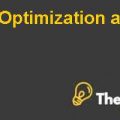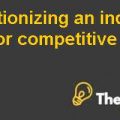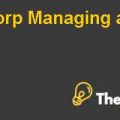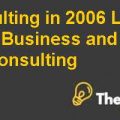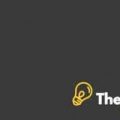Mind Reading Assignment Case Study Solution
Introduction
The use of mind-reading technology or Brain-Computer Interface (BCI) has been a topic of research and development for many years. In recent times, there has been a significant advancement in technology, leading to the development of portable EEG devices that can track brain activity levels in real time. This technology can have a significant impact on the healthcare industry, particularly in the field of mental health.
Problem Statement
The growth of IoT and smart devices has made it possible for people to continuously monitor their important body parameters such as blood pressure or heart rate. However, there is currently no company focusing on developing a device to monitor brain and mental health. Traditional devices used in hospitals have limitations in terms of real-life long-term continuous data monitoring.
This lack of data collection and analysis is a significant problem for patients suffering from psychological issues, as well as doctors and healthcare providers who are seeking more accurate and efficient ways to interpret mental health. Mind-reading technology can address this problem by providing a way to gather valuable data from early diagnosis and treatment to follow-up prevention.
Disruptive Technology Solution
The current technology of portable EEG devices (such as Emotive and Muse) and brainwave devices can enable the development of a new smart wearable device platform, the size of an earbud. These devices, combined with AI and connectivity to other devices such as smartwatches, can make use of the data collected from the brain. Some of the data that can be collected includes stress and anxiety levels, brain activation areas, brain function abnormalities, sleep quality, mood monitoring, focus level, and the ability to read the mind and control other devices hands-free. The technology can also detect early brain or mental abnormalities, allowing for early intervention and treatment.
Concept
Our company aims to develop and market a portable EEG device that can monitor brain activity levels and provide continuous data to an embedded AI system. This system will allow for the early detection and diagnosis of mental health issues, leading to more accurate and effective treatment outcomes. The device will also have the capability to control other devices, making it easier for patients to interact with technology in a hands-free manner.
Value Proposition
Mind-reading technology has a wide range of potential applications and benefits. The value proposition is based on the potential to improve the accuracy and efficiency of mental health diagnoses and treatments, leading to better patient outcomes. The technology can be marketed to different customer segments such as hospitals, elder care, psychiatric facilities, and health-conscious customers.
Target Market
Our target market includes healthcare providers, hospitals, clinics, and psychiatric care facilities. We also plan to target health-conscious consumers who are interested in monitoring their own brain and mental health.
Customer Segmentation
The primary target markets for mind-reading technology are hospitals, elder care facilities, and psychiatric facilities. Healthcare providers in these settings can use technology to improve patient care by providing more accurate diagnoses, tailored treatments, and personalized care plans. The technology can also be marketed to health-conscious customers who want to track and improve their mental well-being.
Go-to-market Strategy
Our go-to-market strategy involves a direct-to-consumer approach, targeting health-conscious consumers interested in monitoring their brain and mental health. We plan to advertise the product through social media platforms, wellness bloggers, and influencers. The product will also be available through online marketplaces such as Amazon and other health and wellness retailers.
To target healthcare providers, we will promote the benefits of continuous brain monitoring for their patients. We will also offer the product for sale through medical equipment distributors.
To bring this technology to market, a strategic approach would be to partner with established healthcare organizations and technology companies. This would allow for the development of a product that is user-friendly, cost-effective, and accessible to a wide range of consumers. An initial pilot program could be launched in a small number of healthcare facilities to gather data and feedback from patients and providers. This data could be used to refine the product and develop a marketing strategy for a larger rollout.
Financial Analysis
Runway Length
Assuming initial startup costs of $1.5 million, we would have a runway of approximately 16 months before we would need to raise additional funds or generate significant revenue.
Exit Strategy
Our exit strategy is to go public or be acquired by a larger healthcare company. We believe that the potential market for portable EEG devices and brain-computer interfaces is significant, and there would be significant interest from potential acquirers or investors...............
Mind Reading Assignment Case Study Solution
This is just a sample partial case solution. Please place the order on the website to order your own originally done case solution.


